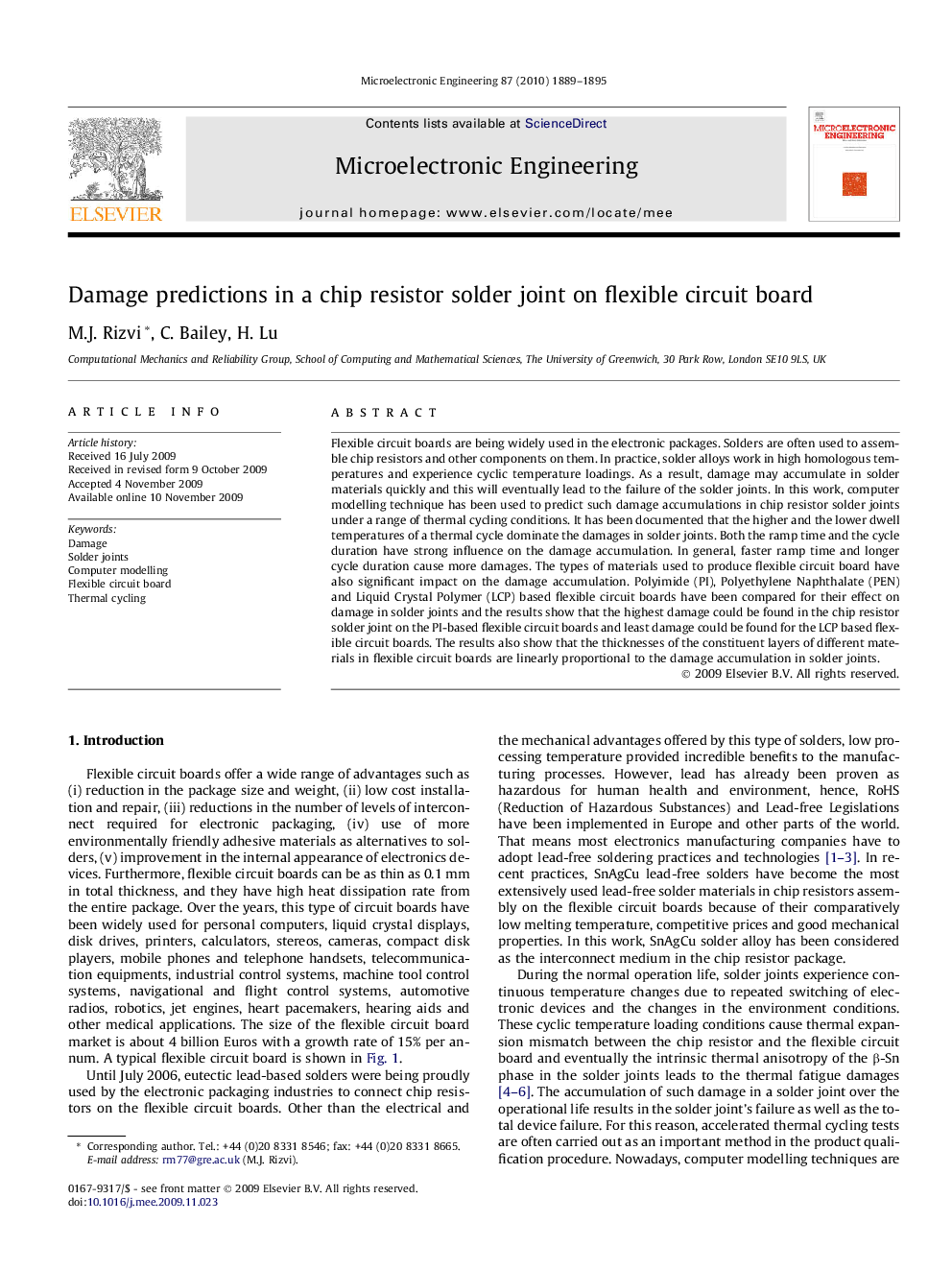| کد مقاله | کد نشریه | سال انتشار | مقاله انگلیسی | نسخه تمام متن |
|---|---|---|---|---|
| 543141 | 871633 | 2010 | 7 صفحه PDF | دانلود رایگان |

Flexible circuit boards are being widely used in the electronic packages. Solders are often used to assemble chip resistors and other components on them. In practice, solder alloys work in high homologous temperatures and experience cyclic temperature loadings. As a result, damage may accumulate in solder materials quickly and this will eventually lead to the failure of the solder joints. In this work, computer modelling technique has been used to predict such damage accumulations in chip resistor solder joints under a range of thermal cycling conditions. It has been documented that the higher and the lower dwell temperatures of a thermal cycle dominate the damages in solder joints. Both the ramp time and the cycle duration have strong influence on the damage accumulation. In general, faster ramp time and longer cycle duration cause more damages. The types of materials used to produce flexible circuit board have also significant impact on the damage accumulation. Polyimide (PI), Polyethylene Naphthalate (PEN) and Liquid Crystal Polymer (LCP) based flexible circuit boards have been compared for their effect on damage in solder joints and the results show that the highest damage could be found in the chip resistor solder joint on the PI-based flexible circuit boards and least damage could be found for the LCP based flexible circuit boards. The results also show that the thicknesses of the constituent layers of different materials in flexible circuit boards are linearly proportional to the damage accumulation in solder joints.
Journal: Microelectronic Engineering - Volume 87, Issue 10, October 2010, Pages 1889–1895